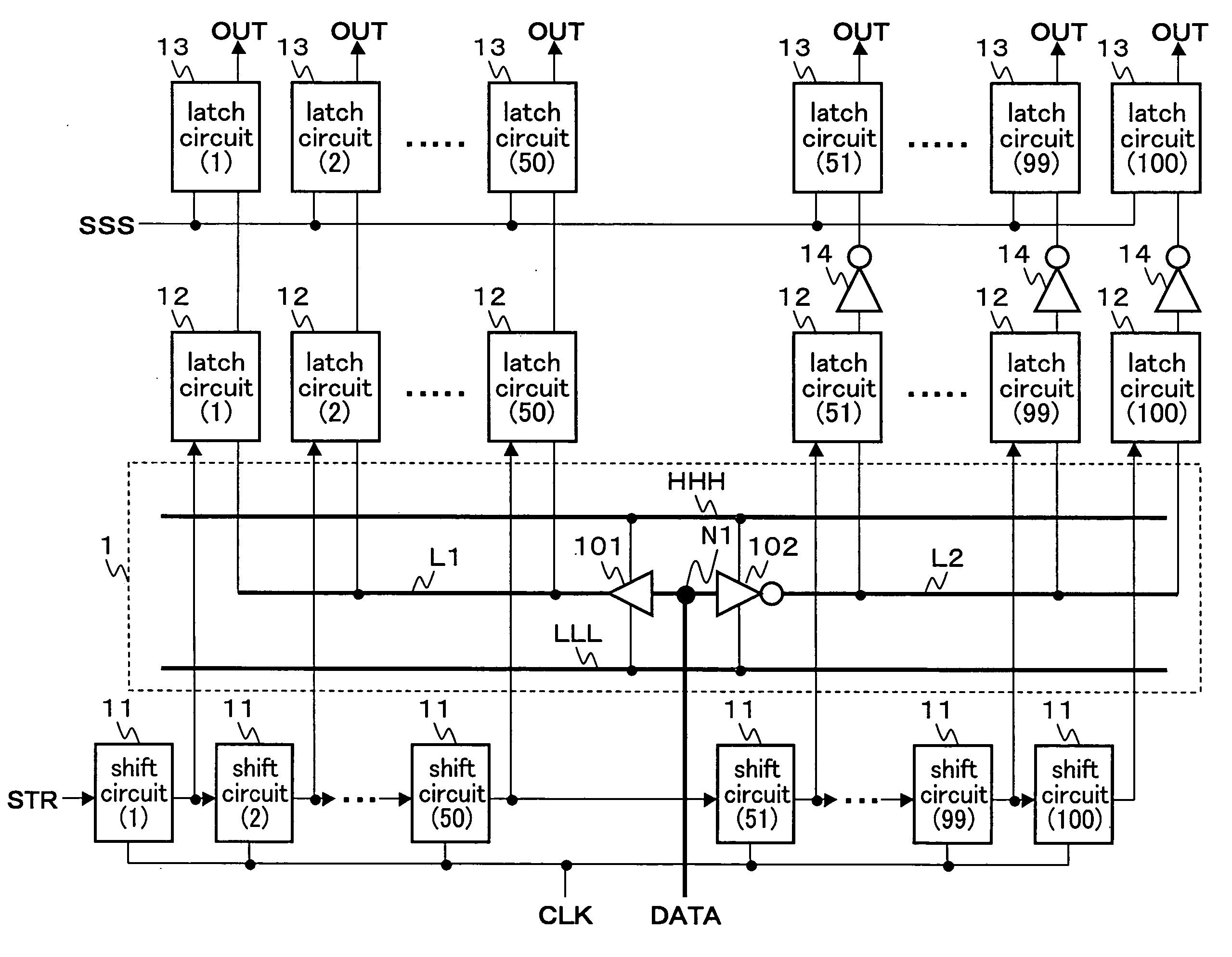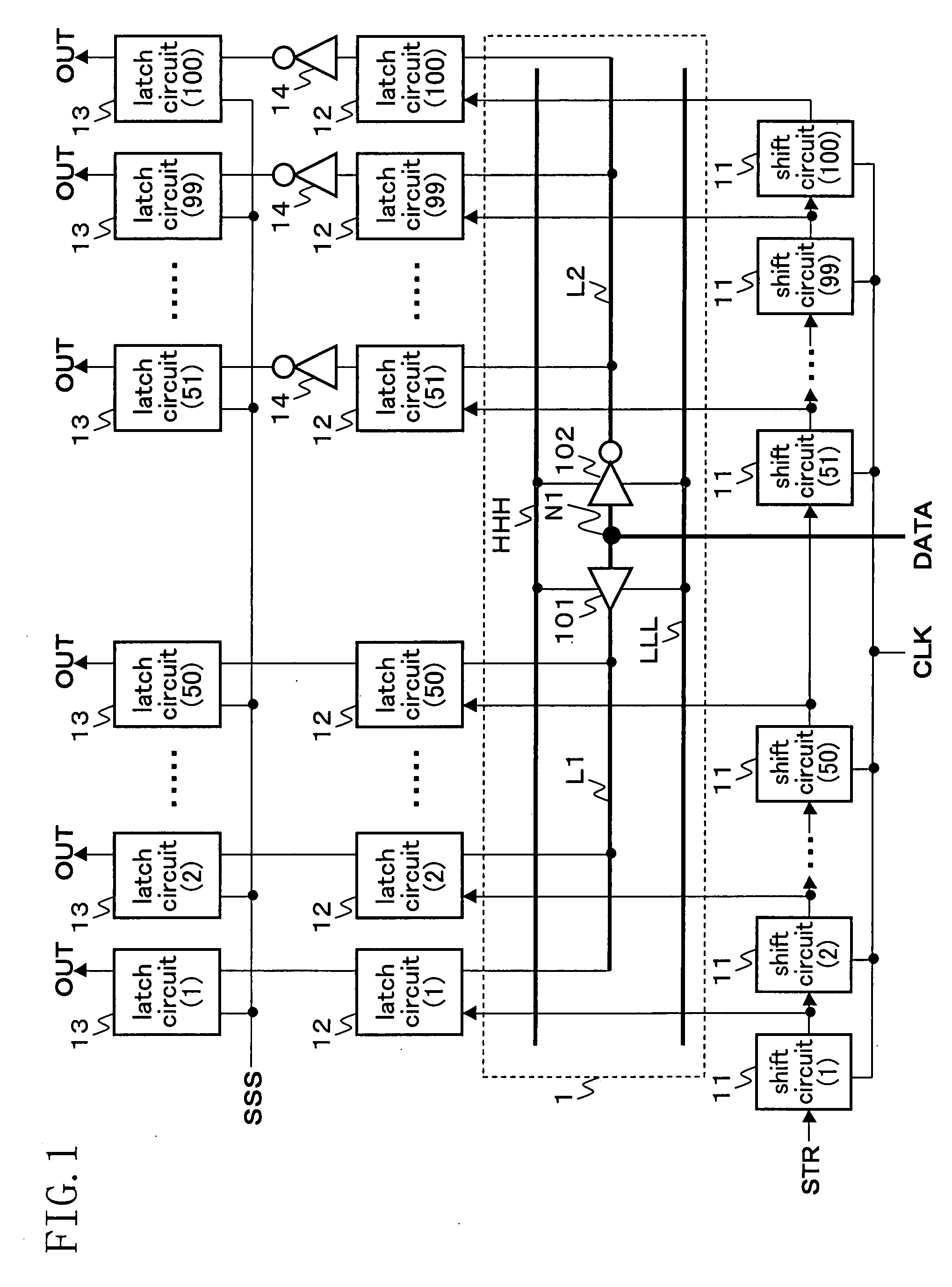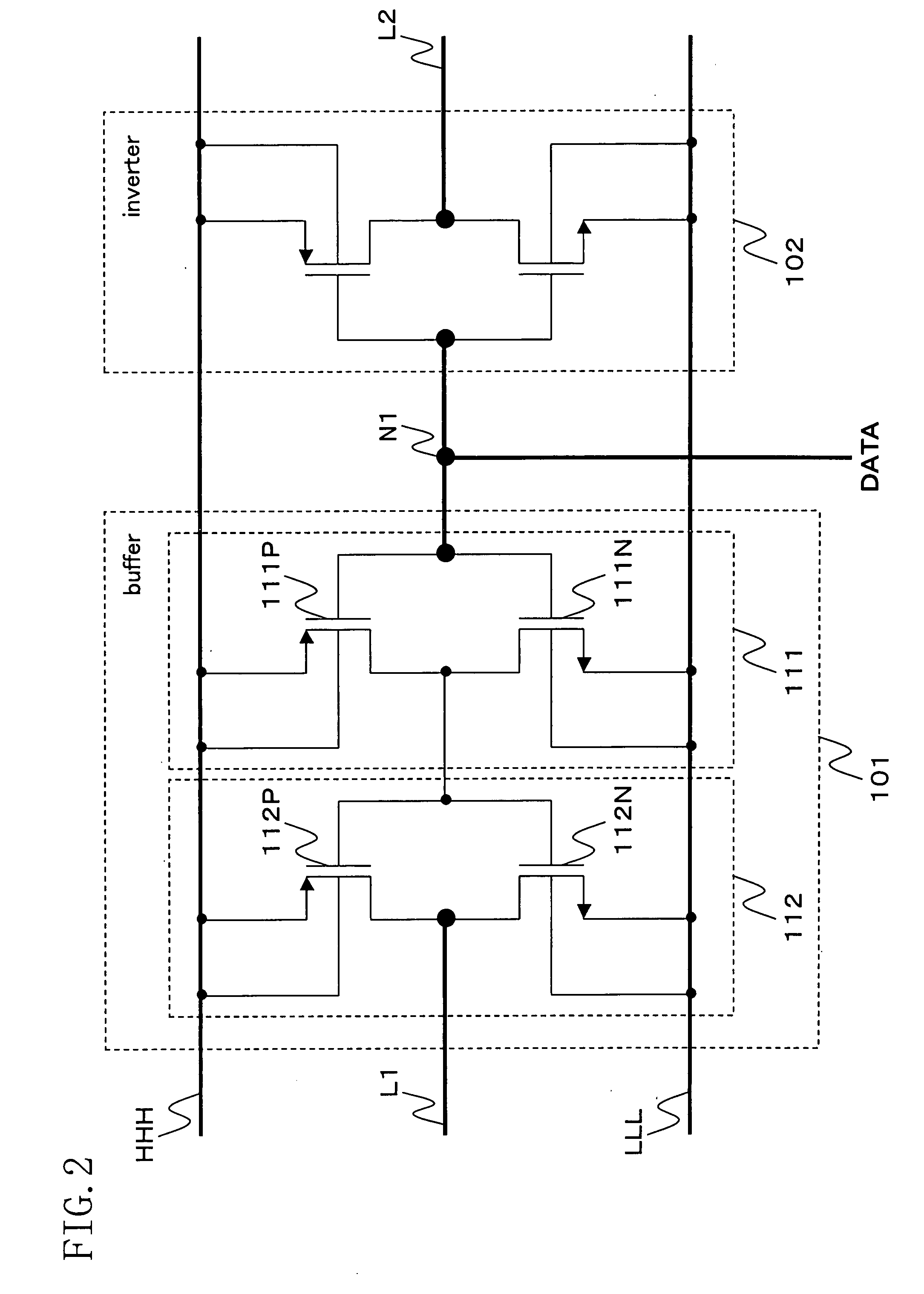Signal transfer circuit, display data processing apparatus, and display apparatus
a signal transfer and data processing technology, applied in the field of signal transfer circuits, can solve problems such as difficult to increase operating frequency, electromagnetic interference deterioration, etc., and achieve the effect of reducing voltage variation
- Summary
- Abstract
- Description
- Claims
- Application Information
AI Technical Summary
Benefits of technology
Problems solved by technology
Method used
Image
Examples
first embodiment
Variation of First Embodiment
[0047] As shown in FIG. 4, the signal transfer circuit 1 may further comprise inverter circuits 103 and 104. The inverter circuit 103 is provided for the signal wiring L1, while the inverter circuit 104 is provided for the signal wiring L2. Note that it is here assumed that the 26th-stage to 50th-stage latch circuits 12 are connected to the signal wiring L1 between the buffer circuit 101 and the inverter circuit 103, while the 51st-stage to 75th-stage latch circuits 12 are connected to the signal wiring L2 between the inverter circuits 102 and 104. Also, in order to bring the display data signal DATA inverted by the inverter circuit 103 back to the original polarity, an inverter circuit 14 is provided for each of the first-stage to 25th-stage latch circuits 12. On the other hand, since the display data signal DATA inverted by the inverter circuit 102 is brought back to the original polarity by the inverter circuit 104, the inverter circuit 14 is not prov...
second embodiment
[0055]FIG. 6 shows a configuration of a signal transfer circuit according to a second embodiment of the present invention. This signal transfer circuit 2 comprises a buffer circuit 201 instead of the inverter circuit 102 of FIG. 4. Also, a display data signal DATA output from the buffer circuit 201 is not inverted, so that the inverter circuit 14 is not provided for any of the 51st-stage to 75th-stage latch circuits 12. On the other hand, in order to bring the display data signal DATA inverted by the inverter circuit 104 back to the original polarity, the inverter circuit 14 is provided for each of the 76th-stage to 100th-stage latch circuits 12. The other portions are similar to those of FIG. 4.
[0056] Next, an operation of the signal transfer circuit 2 of FIG. 6 will be described with reference to FIG. 7.
[0057] When the display data signal DATA goes from the low level to the high level, an output S201 of the buffer circuit 201 goes from the low level to the high level, so that th...
third embodiment
[0062]FIG. 9 shows a configuration of a signal transfer circuit according to a third embodiment of the present invention. This signal transfer circuit 3 comprises a buffer circuit 301, a signal wiring L3, and an inverter circuit 302. An input terminal of the buffer circuit 301 is connected to an input node N1. The signal wiring L3 extends from an output terminal of the buffer circuit 301. The inverter circuit 302 is provided for the signal wiring L3. The other portions are similar to those of FIG. 1.
[0063] Next, an operation of the signal transfer circuit 3 of FIG. 9 will be described with reference to FIG. 10.
[0064] When the polarity of the display data signal DATA is transitioned, the inverter circuit 302 starts an operation reverse to the buffer circuit 301 with a delay from a charging or discharging operation performed by the buffer circuit 301. Thereby, an output S301 of the buffer circuit 301 is transitioned, and thereafter, an output S302 of the inverter circuit 302 is tran...
PUM
 Login to View More
Login to View More Abstract
Description
Claims
Application Information
 Login to View More
Login to View More - R&D
- Intellectual Property
- Life Sciences
- Materials
- Tech Scout
- Unparalleled Data Quality
- Higher Quality Content
- 60% Fewer Hallucinations
Browse by: Latest US Patents, China's latest patents, Technical Efficacy Thesaurus, Application Domain, Technology Topic, Popular Technical Reports.
© 2025 PatSnap. All rights reserved.Legal|Privacy policy|Modern Slavery Act Transparency Statement|Sitemap|About US| Contact US: help@patsnap.com



